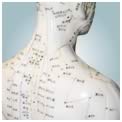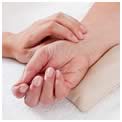

How Acupuncture works
Acupuncture works through balancing the flows of 'vital energy' (Qi – pronounced 'chee') around an individual's system. Qi flows through pathways known as 'meridians' or 'channels'. Flows of Qi are monitored and modified, or balanced, by the acupuncturist.
More about Qi
The concept of Qi is difficult to define and can be translated as breath, life-force, vitality, energy, or what make us feel alive. Along these meridians or channels lie the acupuncture points which were stimulated by fine, slender needles, application of pressure or heat which affects the Qi, unblocks the obstructions, promoting the health. The Chinese have compared the flow of Qi through the meridian system to water irrigating the land. It is invisible to the eye but it can be sensed from its effects by the practitioner.
The mechanisms of Acupuncture
The mechanisms of acupuncture have not been definitively described by standard scientific methodology and there is still some controversy regarding its clinical effectiveness. It's generally accepted that acupuncture acts as a stimulus which activates sensory nerve endings, which in turn generate messages which are transmitted to the brain and spinal cord. These send reflex responses resulting in the release of chemicals which will either reduce pain or trigger the release of other chemicals/hormones, which in turn influence the body's own internal regulatory system. The improved energy and biochemical balance produced by acupuncture promotes physical and emotional well-being.